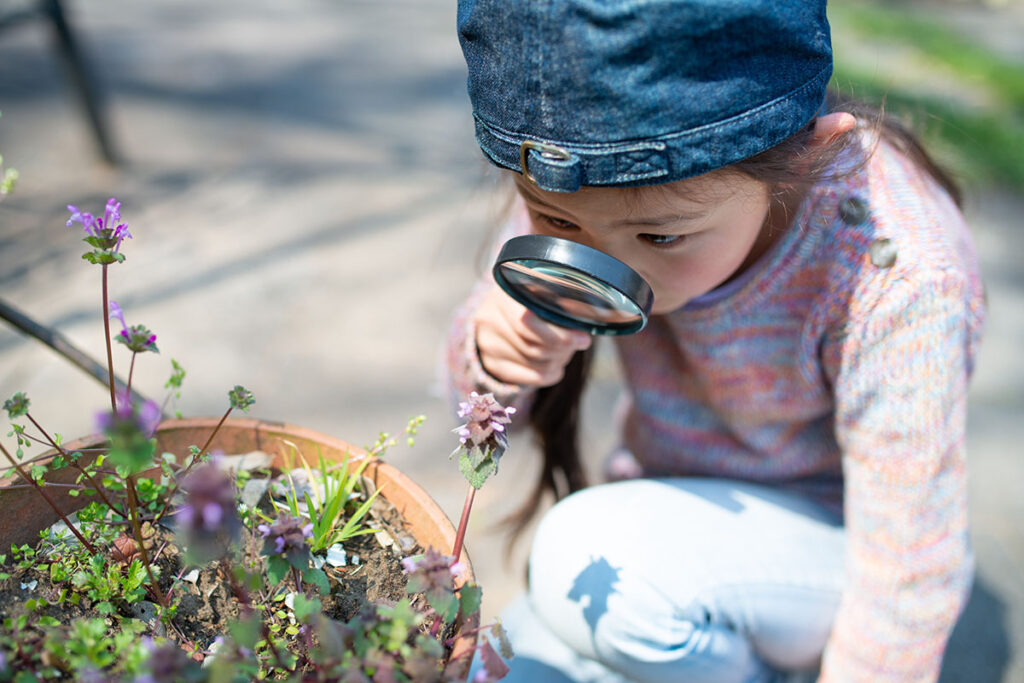Students explore the interactions between humans and the environment. The unit begins with students observing and exploring their school surroundings, asking questions about what they see, hear, and feel. Students are introduced to key concepts through literature, exploration, and collaborative activities. Stories such as Wonder Walkers by Micha Archer, The Tiny Seed by Eric Carle and Come On, Rain! by Karen Hesse guide students in making connections between the weather, plants, and human actions.
Lessons also emphasize social-emotional learning (SEL), encouraging students to reflect on how exploring their environment makes them feel and how changes in their surroundings can impact their emotions. The unit culminates in an action project where students create and share a plan to improve their school environment for both people and nature. This project empowers students to see themselves as problem-solvers and stewards of their environment.

“WOW! What incredible and engaging lessons to do with my students. They loved this opportunity to be scientists, explore and think about the food they eat, and I loved the ways that they began to model. I am so excited about these lessons and cannot wait to share them with my coworkers.”
“I truly enjoyed teaching this. It has been heartwarming to see them care about other living things and the environment.”
“This did a great job of piquing students’ interest and sparking opposing points of view, which created lively discussions on the topic.”
“The message that there are solutions to help us combat climate change and that people are working together to solve problems helped students stay in a place of curiosity; they didn’t show anxiety over the content.”
“I heard comments like, ‘I didn’t realize how much climate change affects my community,’ and, ‘This project made me think about what I can do to help.'”
“This lesson brought in cultural stories from the original people who inhabited California. This is a perspective that is not often taught in science. I think that the kids liked having science be a little less facts and figures and more story.”
“Students really wanted to share their food traditions and look into how climate change might affect their food traditions.”
“This is engaging because it uses real data about the state students live in and shows changes within their lifetime, like the rise of warehouses and trucking during the pandemic.”
“The kids become more engaged because now they are actually actively doing things. They’re really having to look for themselves. It’s not given to them on a platter, but all the resources are right there.”
“Using the maps and seeing things like schools and how close they are to hazards is really cool. They may not be super connected personally, but they can put themselves in the shoes of other kids and try to relate. I know it’s working because I have a kid that just watches Netflix all day, every day and he pulled out his earbud and participated!”
“They’ve never thought about stuff like this before, and now they’re sharing it. One girl said this was the only class that she went home and talked to her parents about.”
“I am so amazed and impressed by the depth of resources that you embedded in the teacher guide. This is really well put together.”

Angelle Lailhengue, Curriculum Developer
Meagan Nelson-Palamara, Curriculum Developer
Emily Schell, University of San Diego
Roni Jones, Ten Strands
Priscilla Barcellos, Lakeside USD
Karen Cerwin, WestEd (retired)
Matt Ellinger, Designer
Elaine Klein, BSCS
Stacey Lane, Illustrator
Children’s Environmental Literacy Foundation
Elisa Alamillo, Los Angeles USD
Brooke Bismack, Laguna Beach USD
Christine Chaussee, Los Angeles USD
Kimberly Krause, Laguna Beach USD
Michelle Read, Los Angeles USD
Anne Ronkainen, Round Valley School District
Alicia Saucedo, Laguna Beach USD
Yolanda Viramontes, Los Angeles USD